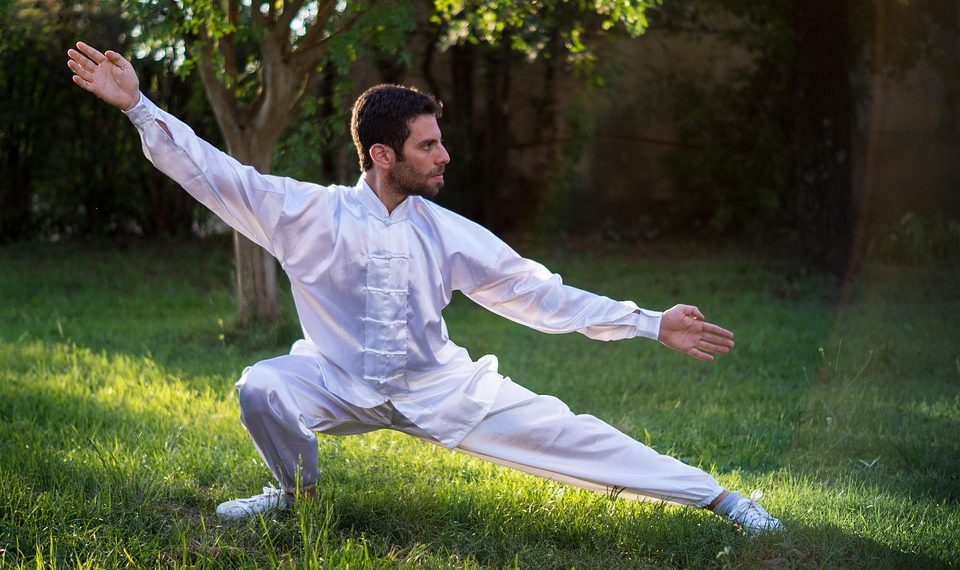Have you ever felt that twinge in your tendons during a workout or while doing everyday activities? You’re not alone. Tendon injuries can be frustrating and painful, but what if I told you that a gentle, flowing practice like Tai Chi could help? That’s right! This ancient martial art isn’t just about relaxation; it’s also a fantastic way to build resilience in your tendons. In this article, we’ll dive into five specific Tai Chi moves that can help you strengthen your tendons and keep you moving freely.
Contents
Understanding Tendon Resilience
Before we get into the moves, let’s take a moment to understand what tendon resilience actually means. Tendons are tough, fibrous tissues that connect muscles to bones. They play a crucial role in movement and stability. When we talk about resilience, we mean the ability of these tendons to withstand stress and recover from strain. Like any other part of your body, they need exercise and care to stay strong.
According to a study published in the Journal of Orthopaedic Research, tendon injuries are often the result of overuse, poor flexibility, and inadequate strength training (Maffulli et al., 2003). Tai Chi can be a fantastic way to combat these issues. Its slow, controlled movements promote flexibility, balance, and strength, all of which are essential for tendon health.
1. Commencing Form (Tai Chi Beginning Posture)
How to Do It
- Stand with your feet shoulder-width apart and your arms relaxed at your sides.
- Slowly raise your arms in front of you, palms facing down, until they reach shoulder height.
- As you lift your arms, gently bend your knees and lower your body slightly.
- Hold this position for a few moments, then slowly lower your arms back to your sides.
Benefits
This foundational movement helps to improve flexibility and balance while engaging the tendons in your legs and arms. It’s an excellent way to warm up before diving into more complex movements.
Pros and Cons
Pros:
- Great for beginners
- Improves overall body awareness
Cons:
- May feel too simple for advanced practitioners
2. Grasp the Bird’s Tail
How to Do It
- Start in the Commencing Form.
- Step to the left with your left foot, turning your body to the left while your arms move in a circular motion.
- As you turn, your right hand should ‘grasp’ an imaginary bird’s tail, while your left hand moves to your side.
- Repeat on the right side.
Benefits
This move enhances shoulder stability and strengthens the tendons in your arms and shoulders. It also helps improve coordination, making it easier to perform daily activities.
Pros and Cons
Pros:
- Engages multiple muscle groups
- Enhances upper body strength
Cons:
- Requires practice to master the coordination
3. Single Whip
How to Do It
- From the previous position, shift your weight onto your right foot and extend your left foot out to the side.
- Extend your left arm forward, palm down, as if you’re “whipping” something away.
- Your right arm should curve back in a relaxed manner.
- Shift your weight back and repeat on the other side.
Benefits
The Single Whip movement is fantastic for improving wrist and ankle flexibility, which is essential for tendon resilience. It also enhances your balance and coordination.
Pros and Cons
Pros:
- Great for improving hand-eye coordination
- Engages both upper and lower body
Cons:
- Can be challenging for those with limited mobility
4. Cloud Hands
How to Do It
- Start from the Commencing Form.
- Shift your weight to your right foot and move your left hand to the left side, palm facing down.
- As you shift your weight to the left foot, bring your right hand up and over, palm facing down.
- Continue to alternate sides in a flowing motion.
Benefits
Cloud Hands is excellent for improving lateral stability and flexibility. This movement engages tendons in your arms, legs, and core, making it a holistic exercise.
Pros and Cons
Pros:
- Promotes relaxation and mindfulness
- Enhances overall body coordination
Cons:
- May feel repetitive for some
5. Parting the Horse’s Mane
How to Do It
- Stand in a horse stance, feet wider than shoulder-width apart.
- Shift your weight to the right, bringing your left hand up, palm facing forward.
- As you shift your weight to the left, lower your left hand and raise your right hand, palm facing forward.
- Repeat this motion, mimicking the action of parting a horse’s mane.
Benefits
This move strengthens the tendons in your arms and legs while promoting balance and stability. It’s also an excellent way to engage your core.
Pros and Cons
Pros:
- Engages multiple muscle groups
- Improves core strength
Cons:
- May require some practice to get the stance right
Frequently Asked Questions
1. How often should I practice these Tai Chi moves?
Aim for at least 2-3 times a week. Consistency is key to improving tendon resilience.
2. Can Tai Chi help with existing tendon injuries?
While Tai Chi can be beneficial, it’s essential to consult a healthcare provider before starting any new exercise regimen, especially if you have existing injuries.
3. Is Tai Chi suitable for all ages?
Absolutely! Tai Chi is low-impact and can be adapted for different fitness levels, making it great for people of all ages.
4. How long does it take to see improvements?
You may start to notice improvements in flexibility and strength within a few weeks of regular practice.
Conclusion
Incorporating these five Tai Chi moves into your routine can be a game-changer for your tendon resilience. Not only do they help strengthen and stabilize your tendons, but they also promote relaxation and mindfulness. So, why not give it a try? Grab a comfortable spot, put on some soothing music, and let the gentle flow of Tai Chi wash over you. Your tendons will thank you!
And remember, while Tai Chi can be incredibly beneficial, it’s always wise to consult with a healthcare professional before beginning any new exercise program, especially if you have existing health concerns.
This article is for educational purposes only and is not a substitute for professional medical advice. Always consult a qualified healthcare provider before making changes to your health routine.
References
-
Maffulli, N., Ewen, S. W. B., & Reaper, J. (2003). Tendon injuries: A review of the literature. Journal of Orthopaedic Research. Retrieved from https://doi.org/10.1016/S0736-0266(03)00005-8
-
Mayo Clinic. (n.d.). Tendonitis. Retrieved from https://www.mayoclinic.org/diseases-conditions/tendonitis/symptoms-causes/syc-20358511
-
Cleveland Clinic. (n.d.). Tendon Injuries: Causes, Symptoms, and Treatment. Retrieved from https://my.clevelandclinic.org/health/diseases/21959-tendon-injuries
Get Your FREE Natural Health Guide!
Subscribe now and receive our exclusive ebook packed with natural health tips, practical wellness advice, and easy lifestyle changes — delivered straight to your inbox.















